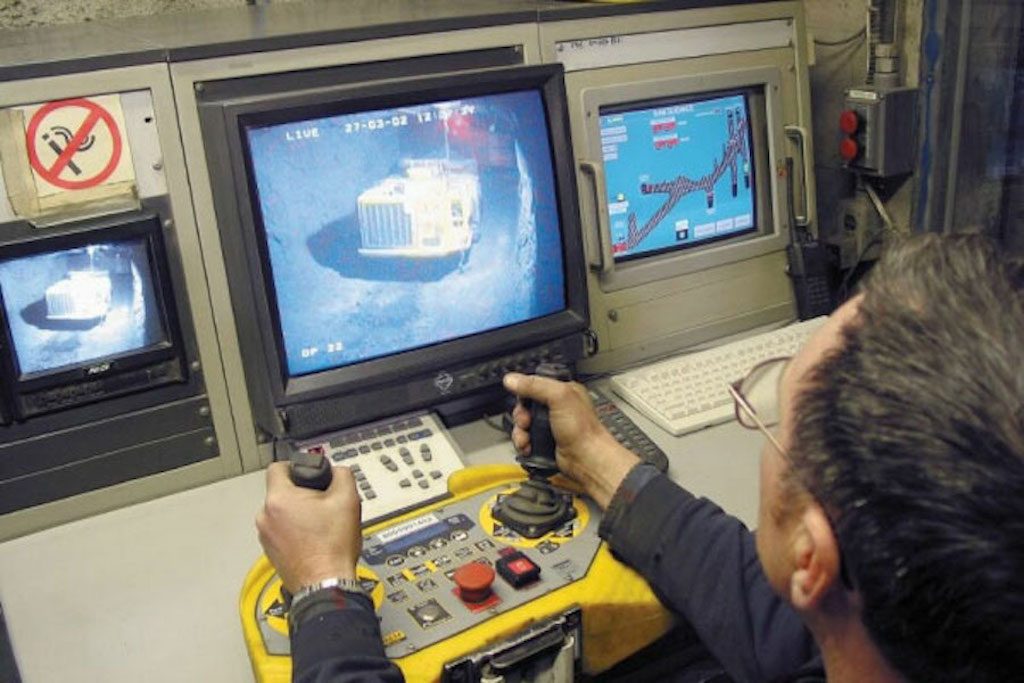The mining automation market is rapidly evolving as the industry embraces digital transformation to enhance safety, efficiency, and productivity. Mining operations, traditionally known for being labor-intensive and hazardous, are now entering a new era driven by autonomous technologies, real-time data analytics, and smart control systems.
Mining automation refers to the use of various automated systems, equipment, and software solutions that reduce the need for human intervention in mining operations. These solutions can range from autonomous haul trucks and drilling machines to advanced monitoring systems and robotics. As global demand for minerals and metals continues to surge, mining companies are investing in automation to streamline operations, cut costs, and ensure worker safety.

Market Overview
The global mining automation market is experiencing substantial growth due to increased demand for high-performance mining equipment, rising labor costs, and the need for operational efficiency. According to industry reports, the market is projected to grow steadily over the next decade, supported by advancements in artificial intelligence (AI), machine learning (ML), and Internet of Things (IoT) technologies.
Mining companies are focusing on sustainable practices, and automation plays a crucial role in reducing environmental impact, optimizing energy consumption, and minimizing human error. With growing pressure from governments and environmental bodies, the adoption of smart technologies is becoming a strategic imperative.
Key Drivers of the Mining Automation Market
1. Improved Worker Safety
Mining environments are often high-risk due to exposure to dust, gas, rock falls, and machinery accidents. Automation helps eliminate human presence in dangerous zones by deploying remotely operated or autonomous equipment, thereby reducing accidents and fatalities.
2. Operational Efficiency and Productivity
Automated systems work 24/7 with consistent output, minimizing downtime and maintenance issues. This continuous operation increases overall productivity and reduces cycle times for tasks such as drilling, blasting, and hauling.
3. Cost Reduction
Mining automation reduces operational costs by decreasing the need for human labor, fuel consumption, and maintenance. Over time, these savings translate into a higher return on investment, especially in large-scale operations.
4. Data-Driven Decision Making
Automation provides access to real-time data that helps monitor equipment performance, track mineral extraction, and manage logistics. These insights enable faster and more informed decision-making, improving profitability and resource management.
5. Remote Operations and Workforce Optimization
Remote monitoring and control allow companies to manage operations from centralized locations. This not only reduces on-site workforce requirements but also enables companies to attract a broader talent pool that may not be willing to work in remote mining sites.
Segmentation of the Mining Automation Market
The mining automation market can be segmented based on:
Equipment Type: Autonomous drilling rigs, automated hauling systems, automated trucks, tele-remote operations, and automated loaders
Software and Solutions: Fleet management, remote monitoring, AI-based predictive analytics, and logistics management
Mineral Type: Coal, metals, precious stones, and industrial minerals
Application: Underground mining and surface mining
Region: North America, Europe, Asia-Pacific, Latin America, Middle East, and Africa
North America and Australia are currently leading the mining automation market due to early adoption, strong infrastructure, and supportive regulatory environments. However, emerging economies in Latin America, Asia, and Africa are also catching up due to their rich mineral reserves and growing interest in advanced technologies.
Challenges Facing the Market
While the mining automation market holds significant promise, it also faces several challenges:
High Initial Investment: The cost of installing and integrating automation technologies can be a barrier for small and mid-sized mining companies.
Skilled Workforce Shortage: There is a growing demand for skilled workers who can operate and maintain advanced equipment and software systems.
Cybersecurity Risks: As mining becomes more connected, the risk of cyberattacks increases, requiring strong IT infrastructure and protocols.
Resistance to Change: Traditional mining companies may face cultural and organizational resistance when transitioning to automated systems.
Key Players in the Mining Automation Market
Several major players are actively shaping the mining automation market through innovation and strategic collaborations. These include:
Caterpillar Inc.
Komatsu Ltd.
Sandvik AB
Hitachi Construction Machinery Co., Ltd.
Epiroc AB
Siemens AG
ABB Ltd.
Hexagon AB
Trimble Inc.
Rockwell Automation, Inc.
These companies are investing heavily in R&D to enhance automation capabilities, improve software platforms, and develop fully integrated mining ecosystems.
Future Outlook and Trends
The future of the mining automation market is closely tied to technological advancements and sustainability goals. Key trends expected to shape the market include:
AI-Powered Predictive Maintenance: Using machine learning algorithms to detect equipment failure before it happens
Autonomous Exploration Vehicles: Expanding the use of autonomous vehicles for exploration in hard-to-reach areas
Green Mining Technologies: Integrating renewable energy and sustainable practices into automated mining operations
Digital Twins: Creating real-time digital replicas of mining operations to simulate and optimize processes
5G Connectivity: Enabling faster communication between machines and control centers for seamless automation
Conclusion
The mining automation market is playing a pivotal role in transforming one of the world’s most essential industries. As companies continue to adopt cutting-edge technologies to improve efficiency, reduce risks, and achieve sustainability, automation is no longer a luxury but a necessity. While challenges remain, the benefits far outweigh the barriers, and early adopters stand to gain a competitive advantage in the global market.
Mining companies that embrace automation today are not only setting themselves up for operational success but also contributing to the development of safer, smarter, and more sustainable mining for the future.